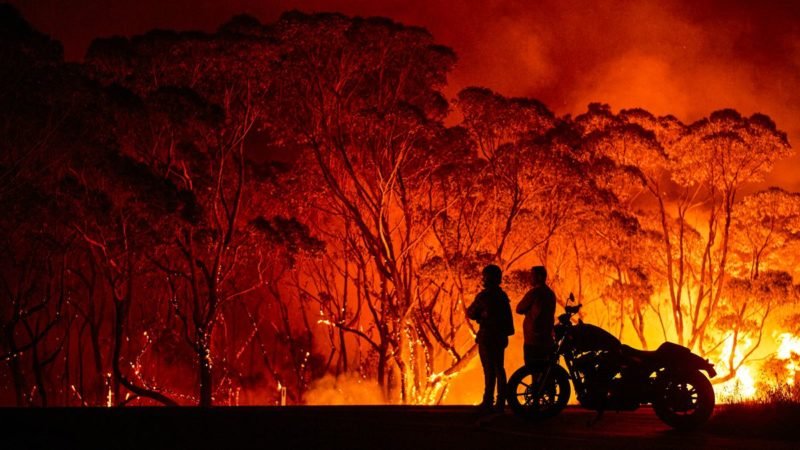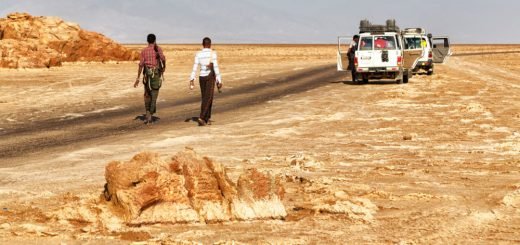Climate change is real! Look at the Australian bush fires, repent and learn

“Climate change is real. It is happening right now. It’s the most urgent threat facing our entire species and we need to work collectively together and stop procrastinating.”
-Leonardo di Caprio, 2016 Oscar acceptance speech.
In the diverse and multilateral times of today, various nations not only share a common past but also the same problems of a present, cascading towards a burning future. Climate change locally and globally is a pertinent and persistent issue which will stay and hamper with the growth of developing economies and fume dark clouds on the developed ones. The “fire season” in Australia not only witnessed its normal share of bushfires but a catastrophic half-lit nation, drowned breathing, helpless indigenous people and crying, home torn wildlife that became underprivileged in a matter of a few months. As the world witnessed the entire canvas of the Australian coastline burn, just a few weeks after the devastation of the Amazonian forests, some tough questions were asked. The children of our children will inherit a future and a planet, build on the greed of sycophants who deliberately to witness their gain, gambled over the threshold of mother nature. Record floods, raging storms and deadly heat – Climate change manifests itself in myriad ways, and it is the ultimate equalizer.
Australia’s weather is influenced by many climate drivers. El Niño and La Niña have perhaps the strongest influence on year-to-year climate variability in Australia. They are a part of a natural cycle known as the El Niño–Southern Oscillation (ENSO) and are associated with a sustained period (many months) of warming (El Niño) or cooling (La Niña) in the central and eastern tropical Pacific. An El Niño occurs when sea surface temperatures in the central and eastern tropical Pacific Ocean become substantially warmer than average, and this causes a shift in atmospheric circulation. El Niño events are associated with a weakening, or even reversal, of the prevailing trade winds. Although most major Australian droughts have been associated with El Niño, analysis of past El Niño events show that widespread drought does not occur with every event, and the strength of an El Niño is not directly proportional to the rainfall impacts. For example, during the very strong El Niño that occurred in 1997–98 impacts on rainfall were generally confined to coastal southeastern Australia and Tasmania, while the relatively weak event of 2002–03 saw widespread and significant drought.
During the warmer half of the year, there is a tendency for weather systems to be more mobile during El Niño years, with fewer blocking (stationary) high-pressure systems. Further north, El Niño is associated with both an increase in individual extreme hot days and multi-day warm spells. As a result of decreased rainfall and increased maximum temperatures, the frequency of high fire danger ratings and risk of a significant fire danger season in southeast Australia are significantly higher following an El Niño year, particularly when combined with a positive Indian Ocean Dipole (IOD) event. The bushfires were prolonged not just because of this phenomenon but also due to rising global temperatures leading to a warmer planet.
Global warming may have triggered the collapse of reef ecosystems throughout the tropics. Increased global temperatures are thought by some to bring more violent tropical storms, but reef systems are naturally resilient and recover from storm battering. Most people agree that an upward trend in temperature will cause much more coral bleaching; others suggest that while reefs may die in certain areas, other areas will become habitable for corals, and new reefs will form. However, the rate at which the mass bleaching events occur is estimated to be much faster than reefs can recover from, or adjust to.

Australian Government‘s Great Barrier Reef Marine Park Authority (GBRMPA), says that climate change is the most significant environmental threat to the Great Barrier Reef, while the other major environmental pressures are listed as decreased water quality from land-based runoff, impacts from coastal development and some persistent impacts from fishing activities. The reef is also threatened by storms, coral bleaching and ocean acidification. While numerous marine life species have recovered after previous declines, the strength of the dugong population is continuing to decline. Reef scientist Terry Done has predicted that a one-degree rise in global temperature would result in 82% of the reef bleached—two degrees would result in 97%, while three degrees would result in “total devastation”.
Greenhouse gases play an important role in keeping the planet warm enough to inhabit. But the amount of these gases in our atmosphere has skyrocketed in recent decades. According to the Intergovernmental Panel on Climate Change (IPCC), concentrations of carbon dioxide, methane, and nitrous oxides “have increased to levels unprecedented in at least the last 800,000 years.” Indeed, the atmosphere’s share of carbon dioxide—the planet’s chief climate change contributor—has risen by 40 percent since preindustrial times. According to the World Economic Forum’s 2016 Global Risks Report, the failure to mitigate and adapt to climate change will be “the most impactful risk” facing communities worldwide in the coming decade—ahead even of weapons of mass destruction and water crises. Blame its cascading effects: As climate change transforms global ecosystems, it affects everything from the places we live to the water we drink to the air we breathe.
Despite what climate deniers and fossil fuel lackeys claim—for instance, that the science on global warming is “far from settled”—there’s nothing to debate; climate change is a reality. In its most recent report, the IPCC—the foremost international scientific body for the assessment of climate change—states, “Warming of the climate system is unequivocal, and since the 1950s, many of the observed changes are unprecedented over decades to millennia. The atmosphere and ocean have warmed, the amounts of snow and ice have diminished, and sea level has risen.” Our last decade—2000 to 2009—was hotter than any other decade in at least the past 1,300 years. Analyses indicate that 2016 was the hottest year on record.
The responsibility to reverse this worrying trend lies with us. At least 97 percent of actively publishing climate scientists endorse the consensus position that humans are the lead drivers of climate change. As the IPCC states with its highest degree of confidence, “It is extremely likely that more than half of the observed increase in global average surface temperature from 1951 to 2010 was caused by the anthropogenic increase in GHG concentrations and other anthropogenic forces together.” At the 2015 Paris Climate Change Conference, nearly every nation on earth committed to actions aimed at shifting away from dirty fossil fuels and toward cleaner, smarter energy options in order to limit global temperature rise this century to 2 degrees Celsius—or 1.5 degrees Celsius, if possible.
For its part, the United States—the second-largest contributor to global emissions, after China—pledged to cut its output by 26 percent to 28 percent (relative to 2005 levels) by 2025. Making good on that pledge, however, will require the country to fully implement the Clean Power Plan, which establishes the first national limits on carbon pollution from power plants. We must also move forward with the Obama administration’s Climate Action Plan, which includes steps to promote renewable energy sources, increase fuel economy standards, prioritize energy efficiency, and reduce emissions of greenhouse gases beyond carbon, such as methane.
Fast-forward to today, and President Trump has threatened to abandon the Paris climate agreement and to eliminate “harmful and unnecessary policies such as the Climate Action Plan.” Indeed, his America First Energy Plan not only promises to shackle the United States to climate-polluting fossil fuels but also ignores the ongoing clean energy revolution, which is creating millions of jobs and saving billions of dollars through investments in solar, wind, and other renewable energy resources. Pulling out of the Paris climate agreement and reneging on our climate commitments will scuttle the United States’ global lead on climate change and put our environment, prosperity, and national security at risk. It will also fly in the face of the 71 percent of Americans, including 57 percent of Republicans, who support U.S. participation in the accord. “Americans know that if we retreat from the Paris agreement, we’re retreating from our fundamental obligation to leave our children a livable planet,” says NRDC President Rhea Suh. We must fight to keep a seat at the table and to ensure the Trump administration doesn’t water down the climate commitments to which we agreed.
It is clear that the naysayers will want to believe that climate change isn’t due to anthropological reasons, while it is abundantly clear that the evidence is staring at us and it needs to be acted upon. The voices of the world’s Leo’s and Greta’s will not be sufficient until we all work together and realize that the efforts were to have been taken yesterday and today, we are lagging behind, heading to a bleak and suffocating tomorrow.
India has shown the path to the world by adopting many renewable solutions to its growing demands even as its economy is a leading emerging power.


















